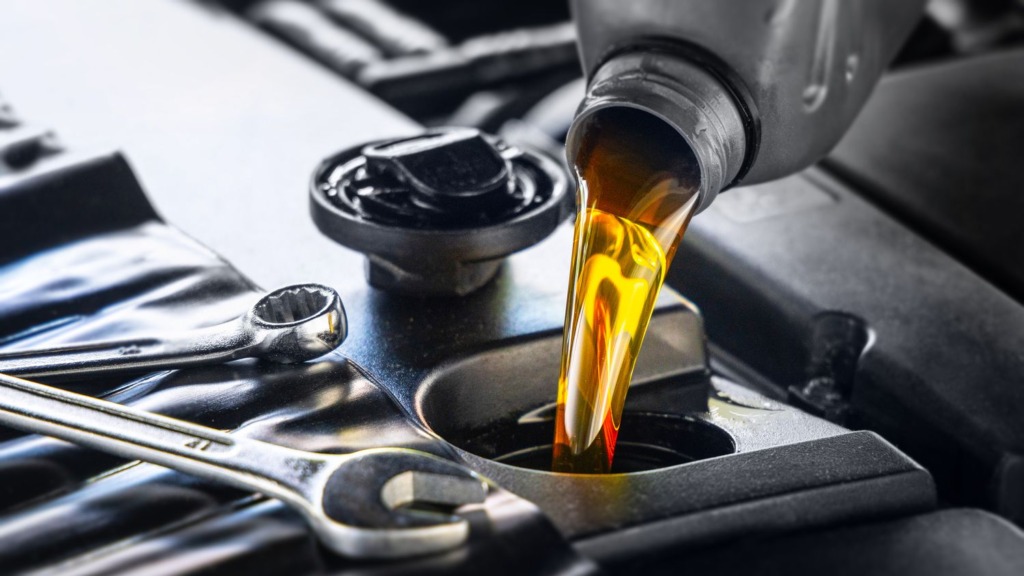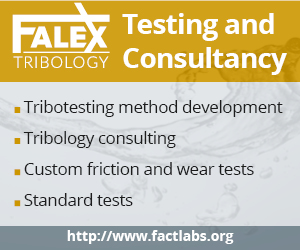The article is written by Riya Veluri, an editorial team member of Industrial Lubricants. After her graduation, Riya works as a website developer & SEO specialist in Lubrication & Tribology Industry & writes technical articles on Lubricants, Lubrication, Reliability & sustainability.
The Future of Automobile Lubrication: Advancements in Lubricant Technology
Table of Contents
Importance of Lubrication in Automobiles
Lubrication plays a vital role in smooth and efficient operation of automobiles. Its importance lies in the reduction of friction and wear within various components of the vehicle’s engine, transmission, and other mechanical systems. By providing a protective layer between moving parts, lubricants minimize heat generation and prevent excessive wear and tear, thereby extending the lifespan of critical components. Additionally, lubrication enhances fuel efficiency by reducing energy losses due to friction, leading to improved overall performance and lower maintenance costs. In essence, lubrication is the silent hero that ensures the longevity, reliability, and optimal functioning of automobiles on the road.
Conventional Lubricants in Automotive Industry
Conventional lubricants have long been the lifeblood of the automotive industry. These time-tested lubricants are typically mineral oil-based and have been the primary choice for decades. They serve a multitude of critical functions within an automobile’s engine, transmission, and various mechanical components. Conventional lubricants provide a vital barrier between moving parts, reducing friction and minimizing wear and tear. They also help dissipate heat generated during engine operation, preventing overheating. Additionally, these lubricants serve as a cleaning agent by carrying away contaminants and debris from crucial components, ensuring they operate smoothly.
While conventional lubricants have been reliable, they do have limitations, such as limited temperature stability and a finite lifespan, which necessitates regular oil changes. In recent years, advancements in lubricant technology, including the introduction of synthetic and bio-based alternatives, have aimed to address these limitations, promising even better performance and efficiency for the future of the automotive industry.
Limitations and Challenges
Understanding the drawbacks of any kind of conventional lubricants is crucial in the context of advancing lubrication technology. Here are some key limitations and challenges associated with conventional lubricants:
- Limited Temperature Range: Conventional lubricants may not perform optimally under extreme temperature conditions. They can thin out at high temperatures, leading to reduced viscosity and lubrication efficiency, while thickening in cold temperatures, hindering startup lubrication.

- Shorter Lifespan: These lubricants tend to degrade and break down over time due to exposure to heat and contaminants. As a result, they require more frequent oil changes and maintenance, increasing operating costs.
- Environmental Impact: Conventional lubricants are often derived from non-renewable petroleum sources. Their production and disposal can have negative environmental consequences, contributing to pollution and resource depletion.
- Limited Fuel Efficiency: The friction-reducing capabilities of conventional lubricants have certain limitations. They may not provide the level of energy efficiency needed to meet increasingly stringent fuel economy standards in modern vehicles.
- Compatibility Issues: Some conventional lubricants may not be compatible with new engine technologies and materials, such as those found in hybrid or electric vehicles, potentially leading to performance issues.
- Increased Wear at Startup: During cold starts, conventional lubricants may take some time to reach optimal viscosity, leading to increased wear and tear on engine components, particularly in regions with cold climates.
- Lack of Customization: Conventional lubricants are generally one-size-fits-all solutions. They do not offer the level of customization and precision lubrication that some advanced systems require.
- Environmental Regulations: Stringent environmental regulations and emissions standards have put pressure on the automotive industry to reduce the use of conventional lubricants due to their environmental impact.
- Alternative Fuel Compatibility: As vehicles powered by alternative fuels, such as hydrogen or natural gas, gain popularity, conventional lubricants may not be suitable for these new engine types.
- Maintenance Costs: The need for regular oil changes and maintenance can be an inconvenience and an additional cost for vehicle owners.
The Evolution of Lubricant Technology
The evolution of lubricant technology has been marked by significant milestones. Early improvements in lubricants saw the gradual refinement of mineral-based oils, enhancing their lubricating properties and extending their utility in automotive applications. However, a major turning point occurred with the transition to synthetic lubricants. These lab-engineered lubricants offered several advantages over any kind of conventional lubricants, including superior high-temperature stability, reduced friction, and enhanced wear protection. The benefits of synthetic lubricants extended beyond performance, as they also contributed to increased fuel efficiency and extended engine life. This shift to synthetic lubricants marked a pivotal moment in the automotive industry’s quest for improved efficiency and longevity in vehicle operation.

Nanotechnology in Lubricants
Nanotechnology has ushered in a new era of innovation in the world of automobile lubricants. At its core, nanotechnology’s role lies in the manipulation and utilization of minuscule particles on a nanoscale, and this has had a profound impact on lubrication technology. Nanoparticles, typically measuring less than 100 nanometers, are now being ingeniously incorporated into lubricants to revolutionize their performance. These tiny wonders serve as active additives, forming a protective layer between moving parts within the engine. This innovative approach leads to enhanced friction reduction, one of the most critical aspects of lubrication. By reducing friction to almost microscopic levels, nanoparticles allow for smoother, more efficient engine operation, resulting in decreased wear and improved fuel efficiency. In essence, nanotechnology’s precision engineering has paved the way for lubricants that are not only incredibly effective but also tailored to meet the increasingly demanding needs of modern automobiles, pushing the boundaries of what was once thought possible in automotive lubrication.
Biodegradable Lubricants
In response to growing environmental concerns within the automotive industry, biodegradable automobile lubricants have emerged as a commendable solution. Environmental concerns in lubrication primarily revolve around the potential harm posed by the disposal of traditional lubricants, which often contain non-biodegradable components. Biodegradable lubricant formulations, on the other hand, are consciously engineered with eco-friendliness in mind. These formulations are typically derived from renewable resources or synthesized with biodegradable base oils, making them less harmful to the environment during production and disposal. The sustainability benefits of biodegradable lubricants extend to reduced ecological impact, as they break down more easily in natural environments, minimizing soil and water pollution. This green approach not only aligns with the industry’s commitment to environmental responsibility but also supports a cleaner, more sustainable future for automobiles, making biodegradable lubricants an appealing choice for environmentally conscious consumers and manufacturers alike.
Smart Lubrication Systems
Smart lubrication systems represent a cutting-edge advancement in the automotive industry, seamlessly integrating the power of the Internet of Things (IoT) into lubrication processes. IoT integration in smart lubrication systems allows for real-time monitoring and maintenance of critical components within a vehicle’s engine and other mechanical systems. These systems utilize sensors and data analytics to continuously assess lubricant condition, temperature, and wear, providing valuable insights into the health of the vehicle’s moving parts. As a result, issues can be identified and addressed proactively, minimizing downtime and reducing the risk of costly breakdowns. Moreover, by ensuring that lubrication is precisely calibrated to meet the specific demands of the vehicle’s operation, smart lubrication systems contribute to improved efficiency and performance, ultimately extending the lifespan of critical components and enhancing the overall reliability of automotive systems. In essence, the integration of IoT technology into lubrication is revolutionizing the way vehicles are maintained, making them not only more dependable but also more efficient in today’s rapidly evolving automotive landscape.

Lubrication Challenges in Electric Vehicles (EVs)
Electric vehicles (EVs) have ushered in a new era of automotive technology, but they also bring unique lubrication challenges to the table. Unlike traditional internal combustion engines, EVs rely on electric motors that generate significantly less heat during operation. This reduction in heat means that the lubrication needs of EVs differ substantially, as they require specialized lubricants to maintain optimal performance and longevity. High-temperature greases are one such innovation, designed to counteract the extreme heat generated by the high-torque, high-speed electric motors found in EVs. These greases ensure that components within the motor and transmission remain adequately lubricated, preventing overheating and excessive wear. Moreover, extending the battery life of EVs is of paramount importance to their overall efficiency and cost-effectiveness. Lubrication plays a crucial role in achieving this goal by reducing friction and energy losses in the drivetrain, contributing to prolonged battery life and ultimately enhancing the sustainability and appeal of electric vehicles in the modern automotive landscape.
Future Trends and Industry Outlook
The future of lubrication technology in the automotive industry holds great promise, with several key trends on the horizon. Predictions for lubrication technology anticipate further advancements in nanotechnology and the continued development of eco-friendly, biodegradable lubricants. Key players in lubricant innovation, including major oil companies and research institutions, are expected to drive these developments, investing in cutting-edge research to meet the ever-evolving needs of the automotive sector. As environmental concerns grow, there is a shift towards sustainable and efficient lubrication solutions, presenting substantial market growth and opportunities. Lubricant manufacturers are poised to capitalize on this shift by offering innovative products that not only enhance vehicle performance but also align with the industry’s commitment to reducing its environmental footprint. As the automotive landscape continues to evolve, lubrication technology is set to play a pivotal role in shaping the future of automobiles, paving the way for more efficient, eco-conscious, and reliable vehicles on the road.


Be the first to comment